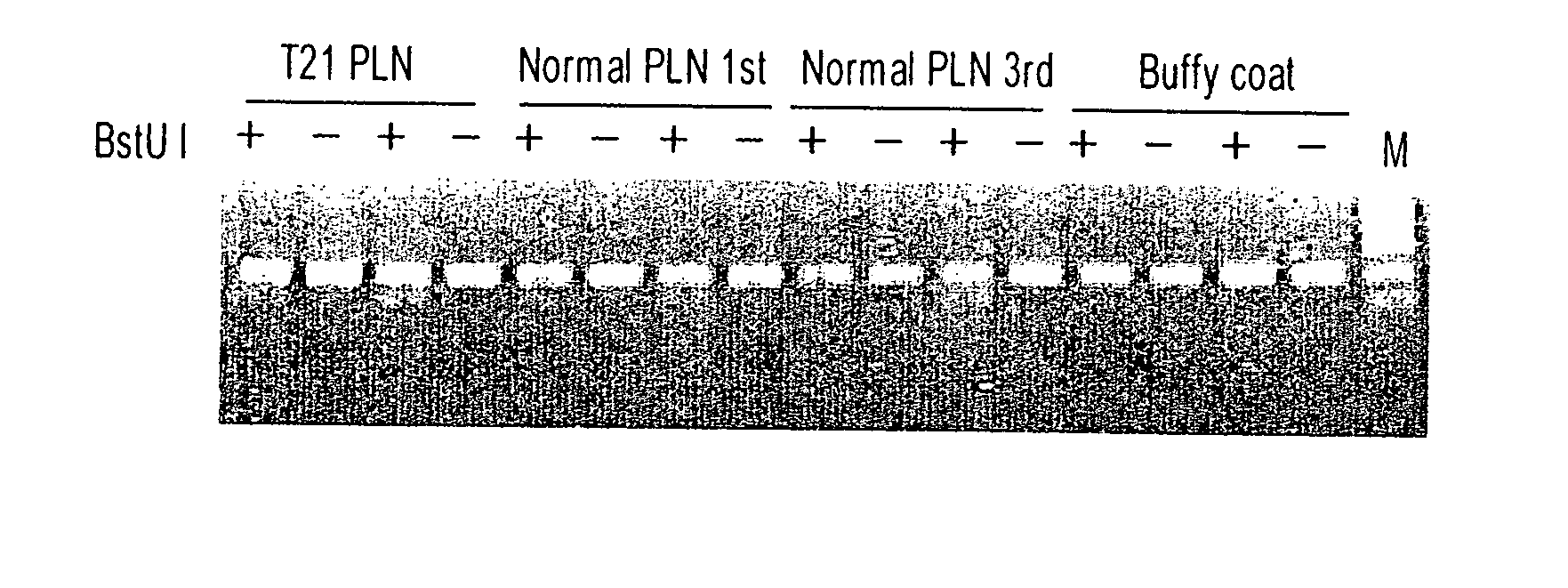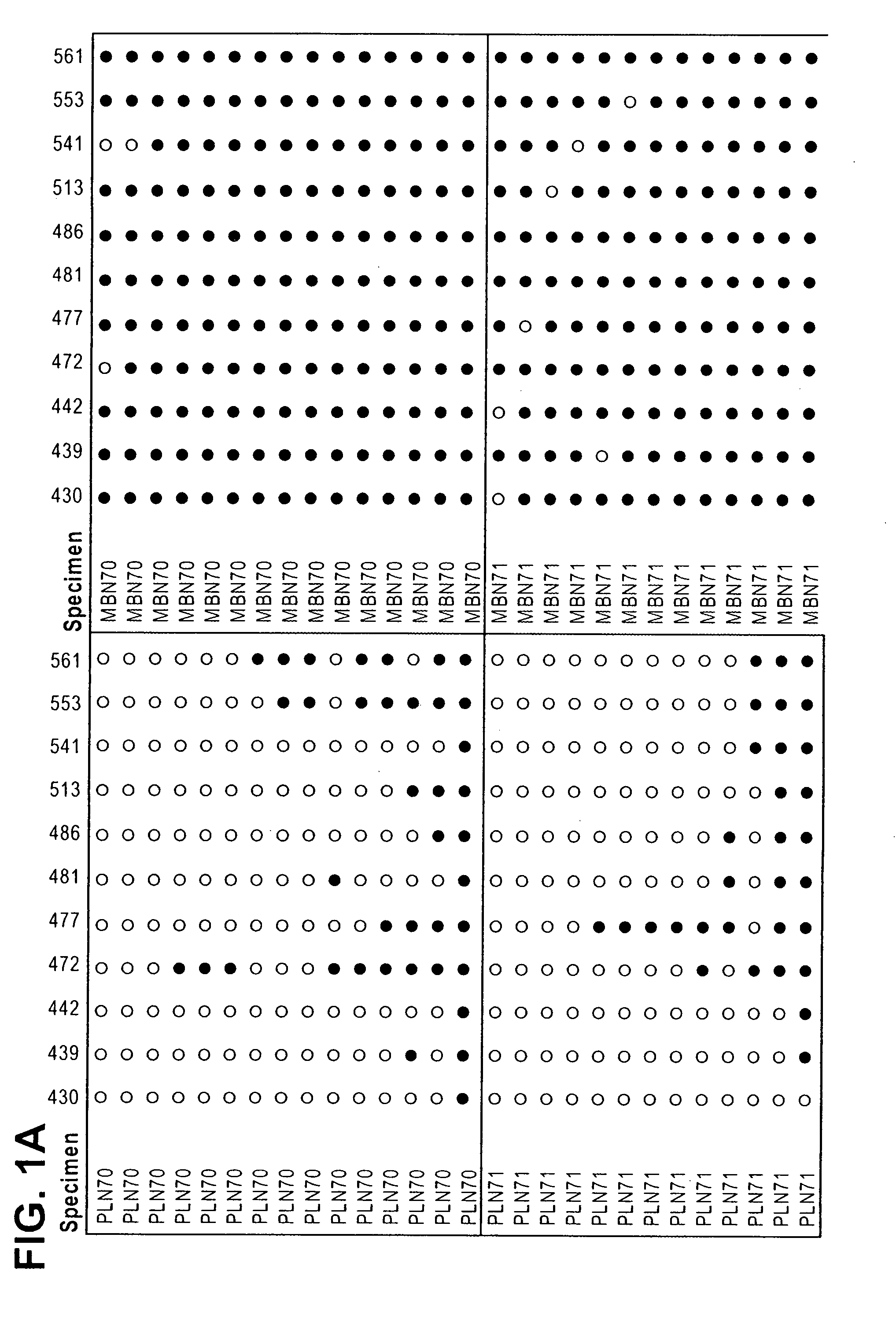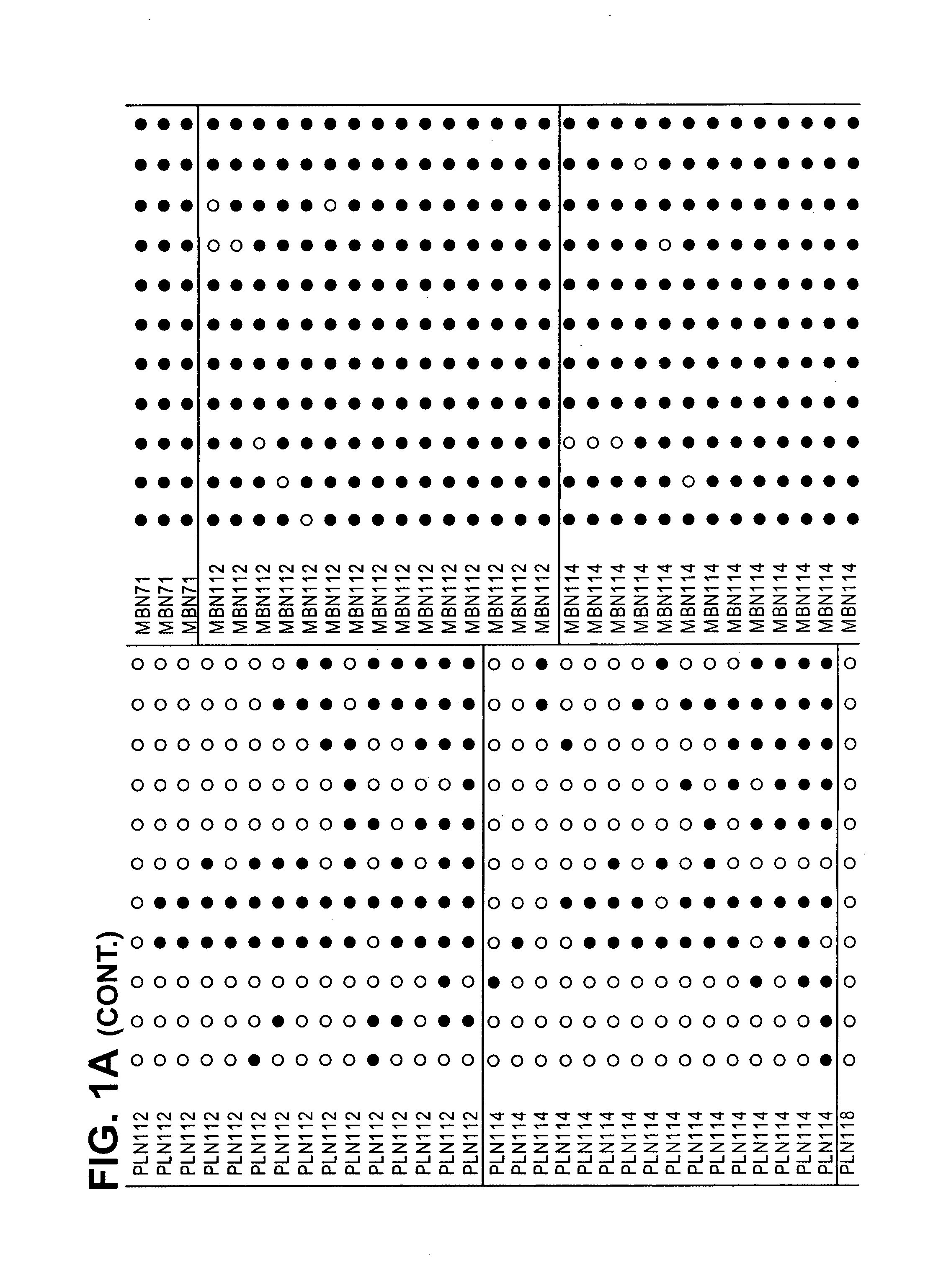Novel markers for prenatal diagnosis and monitoring
a prenatal diagnosis and monitoring technology, applied in the field of new prenatal diagnosis and monitoring markers, can solve the problems of major limitations of conventional methods, invasive methods, and presenting an appreciable risk to both mother and fetus, and achieves the effect of improving the safety and quality of life of mothers and babies
- Summary
- Abstract
- Description
- Claims
- Application Information
AI Technical Summary
Benefits of technology
Problems solved by technology
Method used
Image
Examples
example 1
[0105] We aimed to identify epigenetic markers that are fetal-specific in maternal blood. Previous data suggest that fetal DNA molecules in maternal plasma are predominantly derived from the placenta (Chim et al., Proc Natl Acad Sci U S A., 102:14753-14758; Masuzaki et al., J Med Genet 41, 289-292, 2004; Flori et al., Hum Reprod 19, 723-724, 2004), while the background DNA in maternal plasma may originate from maternal blood cells (Lui et al., Clin Chem 48, 421-427, 2002). Hence, to identify fetal epigenetic markers, the methylation profiles of genetic loci were assessed in both placental tissues and maternal blood cells with an aim to identify loci that demonstrate differential methylation between the two tissue types. Such markers can be used for prenatal diagnosis and monitoring of pregnancy-related conditions.
Materials and Methods
[0106] Identification of CpG-containing genomic sequences DNA methylation refers to the addition of a methyl group to the fifth carbon position of c...
example 2
[0130] The CG-containing genomic sequences with differential methylation profile between placental tissues and maternal blood cells are useful as fetal epigenetic markers for maternal blood detection. In order to distinguish the fetal-derived DNA molecules from those that are maternally-derived in maternal blood, assays should target the detection of the placental-specific epigenetic form of each differentially methylated locus. An assay has been developed to target the placental-specific form of CGI137 (FIG. 1), namely the unmethylated molecules, and assessed its specificity.
Materials and Methods
[0131] Sample processing and DNA extraction. A third-trimester placental tissue sample and corresponding maternal blood sample were collected from a subject undergoing delivery by elective cesarean section. Maternal blood (10 mL) was collected into EDTA tubes prior to as well as after the delivery. The blood samples were centrifuged at 1600×g for 10 min at 4° C. The buffy coat portion wa...
example 3
[0138] An alternative method, combined bisulfite restriction analysis (COBRA) (Xiong and Laird Nucleic Acids Res 25: 2532-2534, 1997), was used to assess for the presence of differential methylation of 3 genomic sequences on chromosome 21 (Table 11) between DNA from placentas and maternal blood cells.
TABLE 11Identity, location, primer sequences and PCR reaction conditions of thestudied genomic sequences on chromosome 21. The respective regions ongenomic contigs (accession number, version, start and end nucleotidenumbers) deposited at GenBank of the National Center for BiotechnologyInformation and chromosomal locations (chromosome, start and endnucleotide numbers) on the Human May 2004 (hg17) assembly of the UCSCgenome browser (genome.ucsc.edu) are shown in the second and thirdcolumns, respectively.Region onSequencegenomicChromosomalF-primerR-primernamecontiglocation(5′-3′)(5′-3′)HLCS regionNT_011512.10:chr21:37, 275, 090-GGAGTGTTAAATTTGCRCTACCCTTCTCA24015427-2401509037, 275, 427GT...
PUM
| Property | Measurement | Unit |
|---|---|---|
| Digital information | aaaaa | aaaaa |
| Volume | aaaaa | aaaaa |
| Volume | aaaaa | aaaaa |
Abstract
Description
Claims
Application Information
 Login to View More
Login to View More - R&D
- Intellectual Property
- Life Sciences
- Materials
- Tech Scout
- Unparalleled Data Quality
- Higher Quality Content
- 60% Fewer Hallucinations
Browse by: Latest US Patents, China's latest patents, Technical Efficacy Thesaurus, Application Domain, Technology Topic, Popular Technical Reports.
© 2025 PatSnap. All rights reserved.Legal|Privacy policy|Modern Slavery Act Transparency Statement|Sitemap|About US| Contact US: help@patsnap.com



